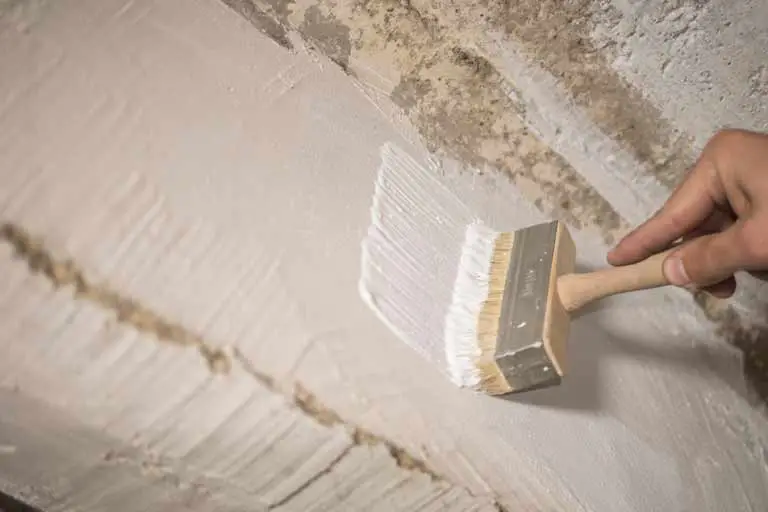
As you begin to explore the world of limewash, you may wonder what happens when it dries. Limewash is a unique paint derived from lime putty, mixed with water, and coloured with natural pigments. Known for its soft, matte finish, it is often used on brick walls and on lime plaster in restoration projects to add depth and character.
During the curing process, limewash appears almost see-through when it’s first applied. As it dries, the applied limewash gets lighter and much more opaque. The slower limewash cures, the more durable the result will be. It’s best to apply limewash on an overcast day to prevent it from drying too quickly, and you should dampen the surface before applying the limewash and as its curing to further control the drying time.
Limewash should dry very slowly over the course of 24 hours. To allow this slow drying time, the finish must be lightly mist sprayed with water if it’s drying too quickly. Additionally, you can hang moist sheeting in front of the limewashed surface to help slow drying times. The finished surface will have a textured, matte effect, giving your walls a charming, rustic appearance that exudes warmth and character.
What Is Limewash
Limewash is a traditional and eco-friendly paint made from the raw material limestone that has been used for centuries to protect and beautify buildings. Unlike conventional paints, limewash is both vapour-permeable (breathable) and natural, making it a popular choice amongst those looking for a sustainable, healthy alternative with a unique appearance.
To make limewash, you first need to create lime putty. Lime putty is produced by adding water to quicklime, which is derived from limestone, resulting in a reaction (called slaking) that creates calcium hydroxide, or hydrated lime (lime putty). This lime putty is then mixed with water and natural pigments to create a thin paint.
As limewash dries, several things happen. Firstly, it lightens in colour, often appearing nearly 10 times darker when wet compared to its final appearance when fully dry. This is partly due to the calcite crystals that form within the paint as it cures. These calcite crystals are light-sensitive, resulting in a lively, matte finish that can seem to change colours depending on the available light.
Secondly, as the limewash dries, it bonds with the surface it has been applied to through a process known as carbonation. During carbonation, the calcium hydroxide in the limewash reacts with carbon dioxide in the air to produce calcium carbonate, which is what gives limewashed surfaces their desirable texture and durability.
Carbonation is why limewashes take much longer than modern paints to dry. It’s a slow process and can only occur in the presence of moisture. This is why it’s so important that the limewash dries very slowly over the course of 24 hours. It’s important to note carbonation and drying are not the same process. The limewash can dry without being sufficiently carbonated, resulting in a very poor and often powdery finish.
When applying limewash, it’s essential to keep in mind several factors:
- The chosen surface should ideally be porous, like lime plaster or render earth walls, or porous masonry, like brick. Non-porous surfaces like plasterboard or cement render can also be painted, but the limewash will require additives like casein (which acts like a natural glue) to help it adhere to the surface.
- Test a small area with the paint to see how the colour and finish interact with natural and artificial light sources within the space.
- Choose an overcast day to apply limewash, as it tends to be more durable when it dries slowly. If necessary, you can also dampen the surface to slow down the drying process.
By understanding limewash’s properties and drying process, you can confidently use this traditional, eco-friendly material to create an attractive and long-lasting finish for your projects.
Related article: What is Limewash? An Overview of This Traditional Paint
Drying Process of Limewash
Carbonation
During the drying of limewash, carbonation plays a crucial role. Whilst the limewash is still damp, it can absorb CO2 from the atmosphere, effectively turning the limewash into a thin layer of stone. This process is necessary for the limewash to gain strength and durability. It’s essential to ensure enough water is present during carbonation; otherwise, the limewash dries without forming a proper bond.
Limewash that dries too quickly will likely have the following characteristics:
- A dusty, powdery surface which will rub off on clothing and be easily washed away.
- An uneven, patchy appearance.
- A crazed and cracked surface.
Changes in Appearance
As limewash dries, you may notice some changes in its appearance. The paint can initially seem transparent upon application, but it will dry to an opaque finish. When using coloured limewash, be aware that the wet shade will dry to a much lighter colour. Another unique feature of limewash paint is its sensitivity to light, which results from the calcite crystals formed within the paint during the curing process. This characteristic creates a dynamic finish that can appear to change colours under different lighting conditions.
To achieve the best results, apply limewash in thin layers, maintaining a wet edge for a more uniform coat. Allow sufficient time for drying between applications—we recommend waiting at least 24 hours or longer, depending on the humidity and temperature in your area.
Choose an overcast day for your limewash application to avoid overly quick drying and a less durable finish. Dampening the surface before applying the limewash must be performed; it will also help slow down the drying process.
Remember to follow these guidelines during your limewash application to ensure a successful curing process and enjoy this paint’s dynamic, beautiful appearance.

Effect of External Factors on Limewash
Weather
When it comes to limewash, the weather plays a significant role in its drying process. You should consider applying limewash on an overcast day, as it dries most durably when drying slowly. Hot, sunny days can cause the limewash to dry too quickly, potentially leading to an uneven finish. In addition, avoid exposing the limewash to freezing temperatures, as the water in the limewash can expand and cause damage.
Water Resistance
Limewash is vapour-permeable, which means it’s naturally breathable due to its high porosity. This allows moisture to escape from your exterior walls and helps prevent potential issues such as dampness or mould growth.
Over time, weathering will occur, giving your limewashed walls a charming, aged appearance. However, limewash is not entirely immune to water, especially when still wet after application or when exposed to high pressure.
Though limewash is breathable, it can be made more water-resistant by adding certain ingredients, such as raw linseed oil. Adding raw linseed oil to your limewash mixture can increase water resistance and durability. But note this comes at the expense of natural breathability.
Related article: Do You Have to Prime Before Limewashing? Essential Tips
Aesthetic Properties as Limewash Dries
As limewash dries, several changes contribute to its unique aesthetic properties. One of the most noticeable transformations is in colour. Limewash, when wet, appears nearly 10 times darker than its final, dried colour. As it dries, the depth of colour varies, reflecting the underlying texture and dampness of the surface.
The colour palette of limewash paint is mainly comprised of natural pigments, which offer a wonderful, visually appealing range of tones, from deep reds to blues and all the in-between. If you are interested in limewash, check out this one from limebase!
In summary, as limewash dries, it undergoes several transformations that contribute to its unique aesthetic properties:
- The depth of colour varies
- Natural pigments offer a subtle range of colours
- Texture changes from matte to rougher or flatter depending on the application
- A soft, matte finish develops.
Through these changes, limewash provides a distinctive, charming look that is perfect for updating the aesthetic of your space while maintaining a versatile, consistent appeal.
Other Notable Characteristics
When using limewash on your surfaces, you’ll discover several remarkable features that make it an attractive and eco-friendly choice. Limewash paint is particularly well-suited for porous surfaces, allowing the paint to bond effectively with materials like brick, porous masonry, lime render and lime plaster. This compatibility also provides long-lasting coverage, enhancing the curb appeal of your home or building.
As limewash dries, its hypoallergenic properties come into play. Unlike many traditional paints, limewash is free from volatile organic compounds (VOCs) and other harmful chemicals. This results in a healthier environment for you and your family.
Breathability is another key characteristic of limewash paint. It permits air and moisture to pass through the surface, reducing condensation and mould growth. In addition, limewash is a naturally high-pH product, making it resistant to fungus and bacteria.
When you choose limewash paint, you’re creating an aesthetically pleasing surface and making a conscious decision to support eco-friendly alternatives. The absence of VOCs, the paint’s breathability, and hypoallergenic properties contribute to a healthier and more sustainable living environment.
Related article: 6 Reasons to Choose Limewash Over Modern Paint
Coloured Limewash and Special Techniques
When it comes to coloured limewash, it’s important to know that colours are achieved using alkali-resistant (lime-fast) pigments, typically derived from natural sources. These pigments, often metal oxides, are added to the limewash to create your desired colour.
With coloured limewash, you should have an idea of which substrate you will use. For instance, you should consider whether your selected colour will contrast or blend with the red tones on red brick. Take notice of the colour selection process as well, testing how the colour and finish play with both natural and artificial light sources in your space.
When using limewash, remember that its main advantage is that it is breathable and eco-friendly, making it an excellent choice for older buildings. However, it also has mildew and mould-resistant properties and can be a suitable paint alternative for other spaces as well.
Key Takeaways
In conclusion, limewash is a unique, eco-friendly paint made from lime putty, water, and natural pigments. Limewash undergoes several transformations as it dries, resulting in a textured, matte finish that exudes warmth and character.
The carbonation process during drying is crucial for the limewash to gain strength and durability. External factors such as weather and water resistance can affect the drying process and the finished appearance.
Limewash is also hypoallergenic and breathable, making it a healthier and more sustainable choice. With its range of colours and compatibility with porous surfaces, limewash is an excellent choice for those looking for a unique and environmentally conscious option for their painting projects.

